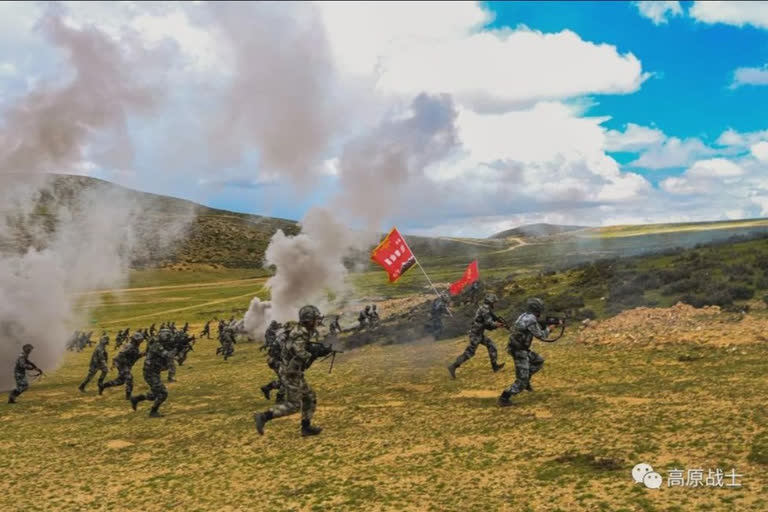New Delhi: Sharply upping the ante in the backdrop of the ongoing maritime Exercise Malabar by the four ‘Quad’ partners - India, US, Australia and Japan - that began from Thursday in the Philippine Sea, state-controlled Chinese media announced Wednesday evening about a huge ‘recent’ military exercise by the PLA in Tibet using advanced weaponry and platforms.
China’s exercise ‘Snowfield Duty-2021’ took place at elevations between 4.500-6,100 metres and “featured more than 10 brigades and regiments affiliated with the PLA Tibet Military Command”. That would roughly amount to about 50,000 soldiers.
Chinese reports spoke of the use of latest weapons, equipment including light Type 15 tanks, use of live ammunition, different time periods and use of all types of combat elements especially meant for the high altitude region.
The equipment and procedures used included howitzers, multiple rocket launcher systems, anti-aircraft batteries before tanks, infantry fighting vehicles and assault vehicles moved forward to capture enemy positions. Communication systems were targeted using electromagnetic disruption while attack helicopters provided additional multidimensional fire support.
Also read: Jaishankar, Blinken discuss strengthening Quad, countering terrorism
The exercise is surprising as it was held just after another mega exercise two months ago that took place in Tibet at altitudes of 3,700 metres.
In the summer of 2020, it was from a similar training exercise that was taking place about 200 km away from the LAC that the PLA troops were suddenly diverted to the standoff sites on the border with India.
While such exercises are common in summers, the armies move back to the base after the completion of the exercise. In 2019, the PLA did not, leading to brutal border skirmishes resulting in a huge amassing of troops and equipment militaries near the border by both China and India.
The ongoing ‘Exercise Malabar’, hosted by the US Navy off Guam in the western Pacific from August 26 to 29, is the 25th edition ever since it began between the Indian and the US navies in 1992. While the Japanese Navy joined in 2015, Australia participated in 2020.
The Indian Navy’s participating ships include INS Shivalik, INS Kadmatt and a P8I patrol aircraft while the US Navy will be represented by USS Barry, USNS Rappahannock, USNS Big Horn and P8A patrol aircraft. The Japanese navy will be represented by JS Kaga, Murasame and Shiranui, along with a submarine and P1 patrol aircraft while the Royal Australian Navy will be represented by HMAS Warramunga.
Also read: Officials of India and 3 other Quad members hold talks on Indo-Pacific
A US Navy release Thursday said: “Elements of the Royal Australian, Indian, Japanese, and American maritime forces routinely operate together in the Indo-Pacific, fostering a cooperative approach toward regional security and stability to deter malign influence."
The release quoted Commander Chris Gahl, commanding officer, USS Barry: “Malabar 21 provides a wonderful opportunity to bolster our international partnerships… Our team is excited to demonstrate (anti-submarine warfare) capabilities and to collaborate alongside our Indo-Pacific partners and allies. The lessons and tactics we share will enhance our strength and capabilities in supporting the common vision of a free and open Indo-Pacific.”
India, the US, Japan and Australia are members of the Quadrilateral Security Dialogue. also called the ‘Quad’, which is seen by China as an anti-China grouping.



